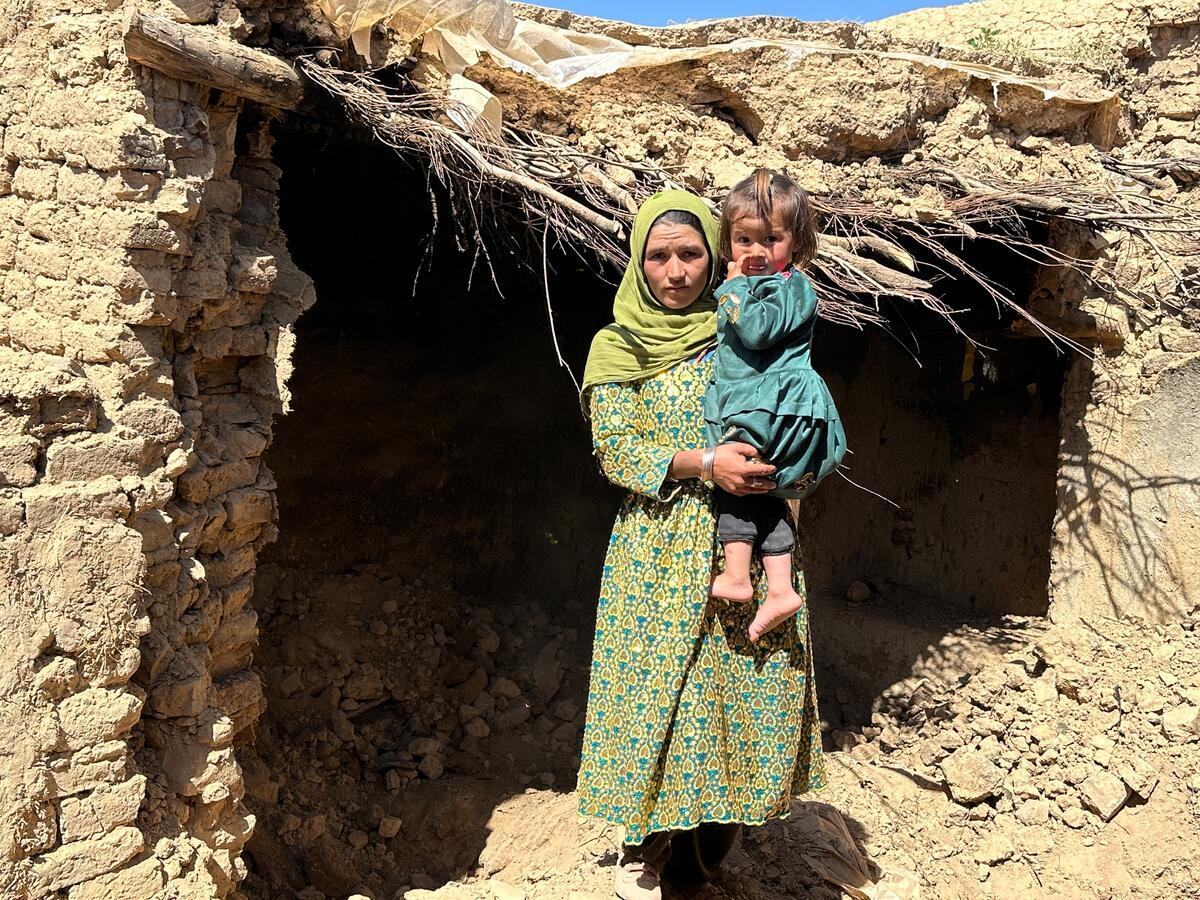UNHCR reports calm along Pakistan-Afghan border
UNHCR reports calm along Pakistan-Afghan border
CHAMAN, Pakistan, Oct. 23 (UNHCR) - The Chaman border crossing between Pakistan and Afghanistan was reported calm Tuesday as the U.N. refugee agency prepared a temporary staging site inside Pakistan to handle the most vulnerable refugee cases.
The agency said some 400 people, mainly women and children, were seen on the Afghan side of the border Tuesday waiting to cross into Pakistan. It added that another group of 300 women and children were allowed to cross overnight after having first been denied access on Monday.
In another development related to the Afghan emergency, UNHCR said it had received more than $19 million in fresh cash contributions over the weekend and on Monday. The agency said the contributions bring the total amount of cash donated to $31 million, just under two-thirds of the $50 million the agency says it needs to provide for a first-wave of 400,000 Afghan refugees.
"The operation is still proceeding hand-to-mouth," UNHCR spokesman Kris Janowski told a news conference in Geneva.
He said the United States had contributed $10 million, Germany $4.4 million, Australia $1.9 million, and the European Commission Humanitarian Aid Office $1.8 million. The remainder of the money came from Finland and Luxembourg.
Meanwhile, UNHCR and its partners continued preparations Tuesday on a temporary staging site at Killi Faizo, about two kilometres from the Chaman border inside Pakistan, in order to provide for the urgent humanitarian needs of the most vulnerable cases, including women, children, and the elderly. UNHCR said about 1,000 people could be initially taken care of at the site.
UNHCR said that work is continuing on two longer-term sites some 20 kms from Chaman, with a combined total capacity for 50,000 refugees.
UNHCR said the border between Pakistan and Afghanistan remains officially closed, but added that people continued to enter through unofficial crossing points, often paying local smugglers to help them across.
"Every day, donkey carts, trucks, and minivans overloaded with belongings and people make the trip down the winding mountain road leading from Chaman to Quetta town," the agency said. "Other families trek through the Khojak hills on foot in order to avoid security checkpoints on the road."
Concerning the Peshawar area in North-West Frontier Province, the other main entry point for Afghan refugees, the agency said findings by its inspection teams indicate that the western and northern parts of the city seem to have the largest concentration of new arrivals.
"The Afghans are in poor health and face problems getting food, shelter, and accessing proper sanitation facilities," UNHCR said. "Despite the huge solidarity among the Afghan population in Peshawar, the absorption capacity of the local refugee community seems to have been reached."
The agency said the Iran-Afghan border was also calm, with no reports of large-scale population movements. But it added that interviews by UNHCR teams with new arrivals in Iran indicated that some 1,200 people had gathered since Thursday in Afghanistan's Nimroz Province in the vicinity of the town of Zaranj near the Iranian border.









